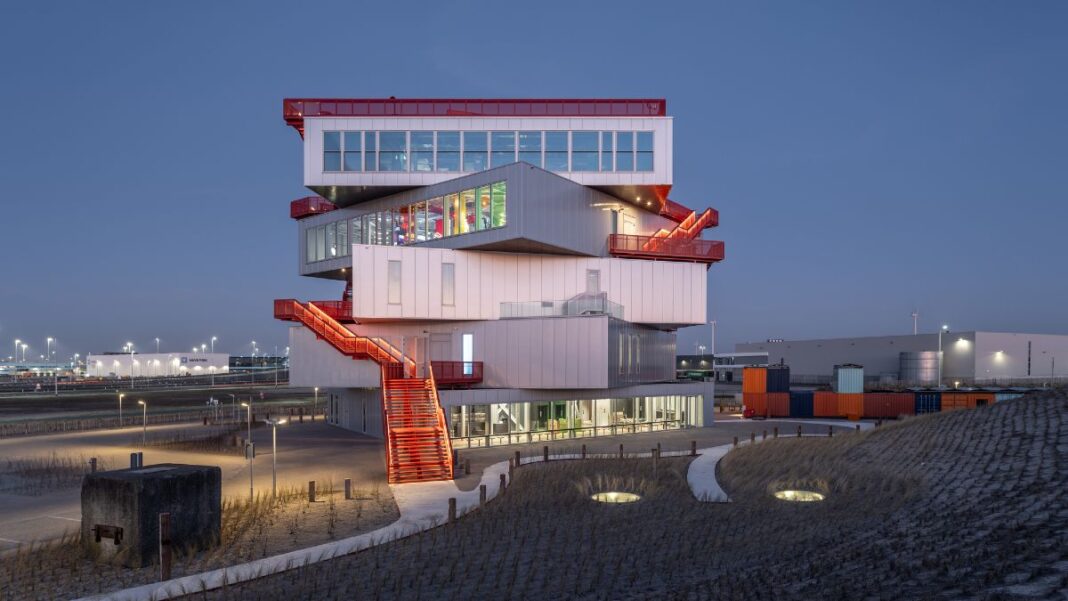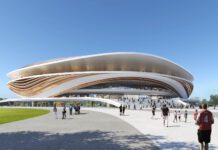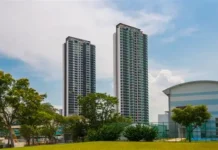MVRDV’s Portlantis offers visitors a fresh perspective on the Port of Rotterdam. For centuries, the city of Rotterdam and its port have evolved together in a symbiotic relationship. In the 21st Century, the Port is undergoing one of the most significant transformations in its history, transitioning to sustainable, low-energy operations. The building consists of five rotated exhibition spaces, standing out with its striking crimson-red public route that leads from the dunes to the rooftop, offering spectacular views in all directions of the North Sea, the coastline, and the port.
Portlantis occupies a prominent spot on the beach of the Maasvlakte 2 artificial land extension in the port, creating a beacon visible from afar. The design takes a practical, straightforward approach to its educational mission, reflecting the spirit of the port with its functional design, dramatic presence, and industrial materials. The orientation of each floor and its main window corresponds to its function: on the ground floor café, the window faces westward, offering a peaceful view of the dunes, while diners on the fourth-floor restaurant can enjoy both sunsets over the North Sea and the illuminated skyline of the port at night.
The permanent exhibition, designed by Kossmanndejong, spans three levels and showcases objects from the industrial environment of the port. Each level of the exhibition addresses a different theme, with the panoramic windows focusing on elements within the port that enhance the exhibition’s content. At the centre of the building is a 22 m tall atrium, which functions as an exhibition space in itself. A kinetic sculpture hangs from the atrium, and a model of the Port of Rotterdam greets visitors on the ground floor.
The building’s structure is demountable, allowing its parts to be easily reused, and the facade panels are designed to be returned to the manufacturer at the end of their lifespan. Even the foundation avoids the use of concrete piles, ensuring that it leaves no trace. Additionally, the building operates as better-than-energy-neutral. Efficient insulation and a heat pump minimise energy requirements, and thanks to a dedicated on-site windmill, the project generates 30 per cent more energy than it consumes.





